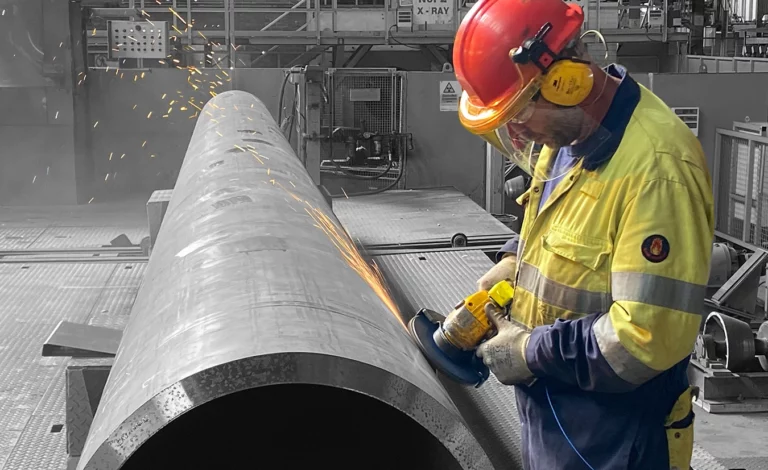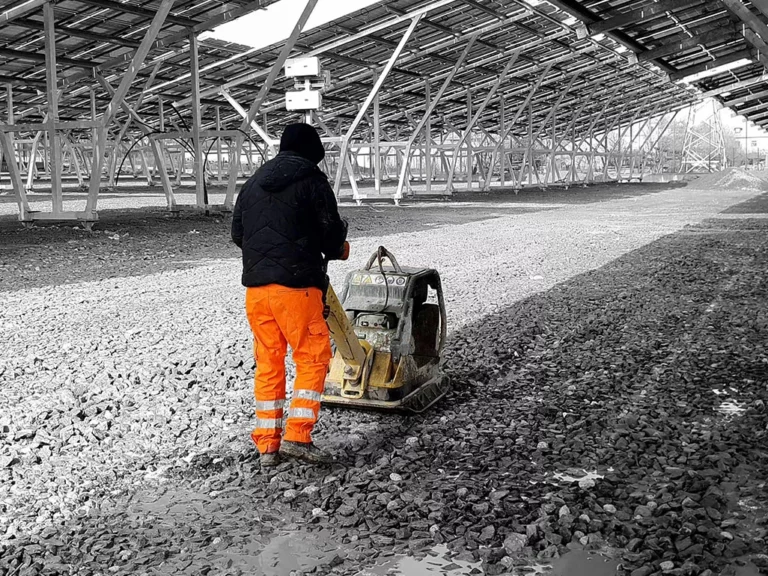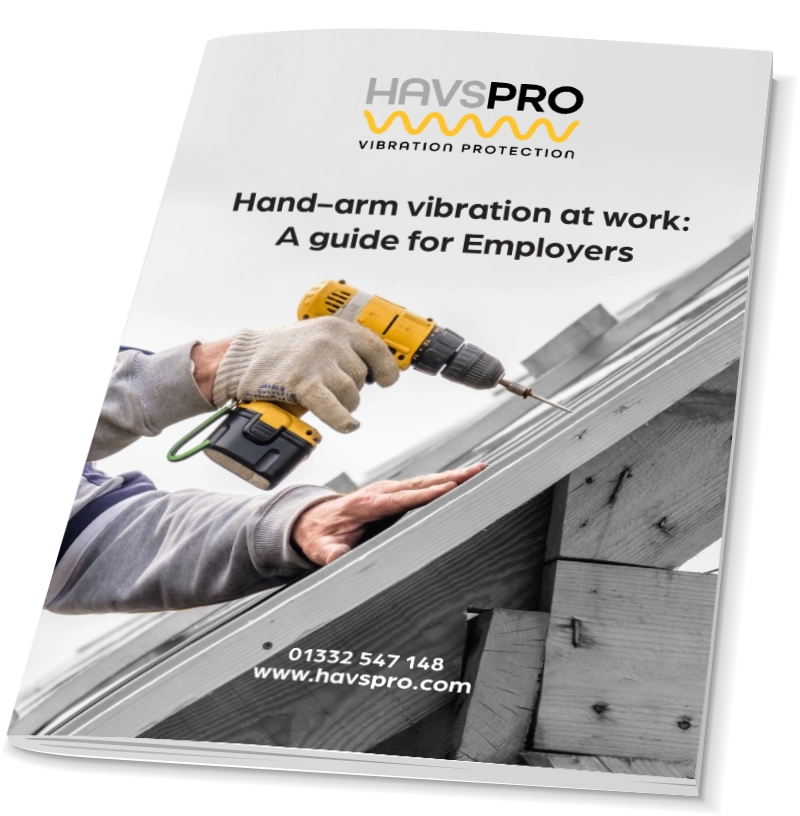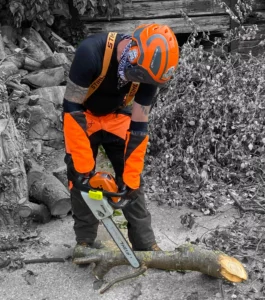Understanding HAVS and WBV
Understanding HAVS and WBV is essential if you are going to manage the risk from vibration exposure to as low as reasonably practicable (ALARP).
Extended use of vibrating tools and machinery such as drills, saws, sanders, strimmers and impact hammers can lead to nerve damage and long-term health problems such as Hand-Arm Vibration syndrome (HAVS) and Whole Body Vibration (WBV) issues.
Both are seriously debilitating and incurable conditions that are entirely preventable through monitoring an operator’s exposure to vibration.
Alarmingly, HAVS is on the rise. HSE figures show 5,620 new cases in the UK over the last ten years – an increase of 12.5% on the previous decade. Understanding HAVS and WBV is essential to bringing this figure down and protecting workers.
Understanding HAVS - The Statistics
workers worldwide at risk of HAVS (UK Medical Research Council 1999)
workers at risk of vibration exposure every day in the UK (HSE)
workers currently suffering from advanced stages of HAVS or WBV
workers suffering from a new case of work-related musculoskeletal disorder in 2019/20
Vibration limits
Vibration limits are defined by 2 limits, set by the HSE, both of which are calculated by assessing the vibration at grip points on a tool or piece of equipment, and the time spent using it.

EAV
The exposure action value, EAV is the daily amount of vibration exposure above which employers are required to take action to control exposure. The limit is set by HSE at 100 points or 2.5M/S2. EAV represents a clear risk requiring management.

ELV
The exposure limit value, ELV is the maximum amount of vibration any employee may be exposed to on any single day. This is the absolute limit, as set by HSE at 400 points or 5M/S2. It represents a high risk above which employees should not be exposed.
In some cases, individual operators may have lower values according to their own health factors or Occupational Health Guidance. Some companies choose to operate at lower limits, levels below the HSE Regulations.
All limits can be lowered to suit the company or individual needs, however, they CANNOT exceed HSE Regulations of 100 points to EAV and 400 points to ELV.
The Control of Vibration
at Work Regulations (2005)
The Control of Vibration at Work Regulations (2005) requires all businesses to control operator risks from WBV and protect against HAVS through taking the following steps:
- Assess the vibration risk to all employees
- Assess those who might be exposed above the EAV and introduce a programme of controls to eliminate or reduce their daily exposure
- Decide if they are likely to be exposed above the ELV and to take immediate action to reduce their exposure if they are
- Provide information and training on health risks and controls to employees at risk
- Keep a record of risk assessment and control actions
- Review and update the risk assessment regularly
If vibration is not controlled in line with official regulations, companies face heavy fines of up to £600,000 – in the last five years, 20 companies have been fined a total of £4,357,000 in cases brought by the HSE. Companies could face significant compensation claims with individual compensation payments exceeding £278,000’. (They could face a compensation claim without legal action)
Protect Against HAVS: A Guide for Employers

Legal requirement
All employers are legally required to take reasonable steps to protect the workforce against vibration induced medical conditions, and some methods are more effective than others.
Vibration - the damage done
Any work that includes consistent or frequent exposure to vibration through the hands or arms can lead to debilitating and permanent health problems. Most commonly this is caused by the use of a tool that vibrates during use.
The impact can be felt from using drills, impact wrenches, circular saws, reciprocating saws, dual action sanders, polishers, grinders, impact hammers, SDS drills, jig saws, impact drivers, strimmers, lawn mowers, blowers…
 If vibration levels are exceeded nerve damage and restricted blood flow to the hand and fingers can occur in as little as six months, resulting in pain, tingling and total loss of feeling in the fingers, carpal tunnel syndrome (compression of a major nerve which travels through the wrist) or Reynaud’s syndrome (restricted blood flow to the fingers). These can swiftly lead to loss of fine motor skills (doing up buttons, using a pen), reduced strength and grip and muscle wasting. This debilitating condition can impact the sufferer’s day to day life and can them struggling to work in the very industry which caused it in the first place.
If vibration levels are exceeded nerve damage and restricted blood flow to the hand and fingers can occur in as little as six months, resulting in pain, tingling and total loss of feeling in the fingers, carpal tunnel syndrome (compression of a major nerve which travels through the wrist) or Reynaud’s syndrome (restricted blood flow to the fingers). These can swiftly lead to loss of fine motor skills (doing up buttons, using a pen), reduced strength and grip and muscle wasting. This debilitating condition can impact the sufferer’s day to day life and can them struggling to work in the very industry which caused it in the first place.
Now increasingly evidence is linking a condition called Dupuytren’s contracture to the use of vibrating tools as well. Dupuytren’s appears as a permanent tightening of the muscles, tendons, skin, and nearby tissues that causes the joints to shorten and become very stiff. It mainly affects the ring and little fingers, often in both hands. It is a progressive condition, getting gradually worse, and the only treatment is surgery to straighten the fingers
Whole-body vibration occurs when the body is shaken or jolted through repeated vibration of a seat or the floor. This can happen after prolonged driving or riding on a vehicle along unmade roads, operating earth-moving machines or standing on a structure attached to a large, powerful, fixed machine which is either impacting or vibrating. Symptoms can include backache, motion sickness, fatigue, vision impairment, bone damage, digestive conditions, respiratory conditions, bladder problems, damage to the reproductive organs (it has even been linked to sill birth), heart conditions and even brain damage.
HAVS News

Discover the Leading HAVS Monitoring Solution – Visit SIXIS Technology at The Health and Safety Event 2025
Join SIXIS Technology at The Health and Safety Event 2025 to discover how our advanced HAVS monitoring solution, HAVSPRO, can help protect your workforce from the risks of Hand-Arm Vibration Syndrome (HAVS). Visit Stand 3/K70 to learn more about simplified compliance, real-time monitoring, and easy-to-use tools for vibration risk management.

Take the Risk out of Inaccurate Risk Assessments
Effective risk assessments for vibration are essential to protect employees and ensure compliance with regulations. HAVSPRO provides precise data to identify risks, plan controls, and create accurate assessments that safeguard your business and workforce.

Raynaud’s Awareness Month
Understanding Raynaud’s & Vibration Risks This Awareness Month
February is Raynaud’s Awareness Month, highlighting a condition affecting circulation in fingers and toes. Those using vibrating tools face a higher risk of developing Raynaud’s or Hand-Arm Vibration Syndrome (HAVS). These irreversible conditions impact work and daily life. This blog explores Raynaud’s, its symptoms, and why managing vibration risks is vital for workforce health.

